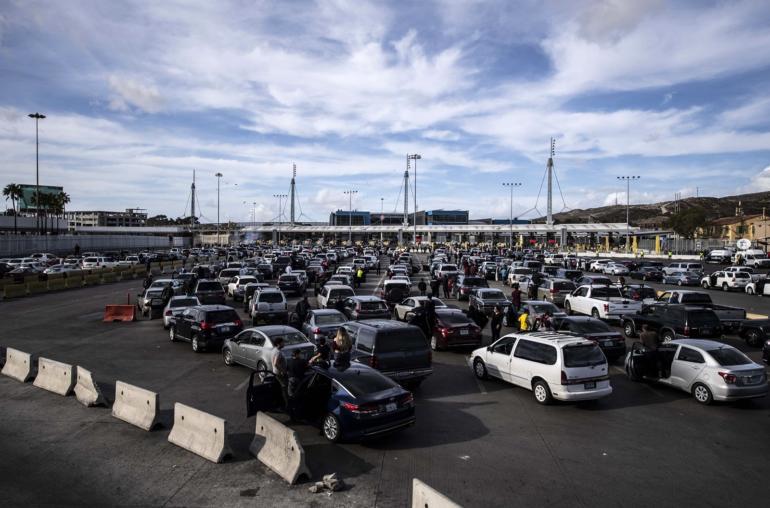Incoming Mexican president Andres Manuel Lopez Obrador faces both a migrant, and economic, issue at the U.S.-Mexico border in Tijuana. Mexico depends heavily on the United States, and it’s especially apparent at the border, where local economies are closely linked.
CGTN’s Alasdair Baverstock reports.
Morning in Tijuana, Mexico.
The locals are on their way to work. Traffic at the U.S. border, cars lined up ahead of the border check. Yet this is an international highway where Tijuana residents cross into the United States to start their commute.
Isela Ricario lives in Tijuana, but works in a jewelry shop in Chula Vista, California.
“I’ve been crossing the border for six years. Every day, even on the weekends,” she explains. “I have get up three hours earlier to get to work, because I don’t know how busy the border will be.”
She’s one of the tens of thousands of Tijuana residents who live in Mexico, but work in California.
The community’s economy depends heavily on its proximity to the United States. At the San Ysidro border – the world’s busiest international frontier – around 120,000 commuter vehicles and over 60,000 pedestrians move back and forth between the two countries every day.
Yet as president-elect Obrador prepares to take office, he has stated that one of his goals is to encourage Mexicans to stop leaving the country to seek work in America, and contribute instead to their local economies.
Rogelio Varela is a professor of international economics, and said a wider international economic strategy would be more beneficial.
“Tijuana has strong ties to the United States, that’s the reality,” according to the professor. “But one of the things the new administration will have to actively strengthen is the growth of the formal economy, which will in turn make migration drop.”
Some international commuters have ideas of their own to make Mexico more attractive to the workforce.
“In Mexico, they don’t pay too much because they pay per day, and over there [the U.S.] they pay per hour,” one commuter said. “So it would be good if right here in Mexico they changed it and paid per hour.”
As President-elect Lopez Obrador begins with Mexico’s economy on his agenda, Tijuana it seems will continue to look north for its stability.
 CGTN America
CGTN America
 People in their vehicles queue at the Mexico-US border as the US Customs and Border Protection (CBP) carries out an operational readiness exercise at the San Ysidro port of entry in the US, as seen from Tijuana, Baja California State, Mexico, on November 22, 2018. (Photo by Pedro PARDO / AFP)
People in their vehicles queue at the Mexico-US border as the US Customs and Border Protection (CBP) carries out an operational readiness exercise at the San Ysidro port of entry in the US, as seen from Tijuana, Baja California State, Mexico, on November 22, 2018. (Photo by Pedro PARDO / AFP)
